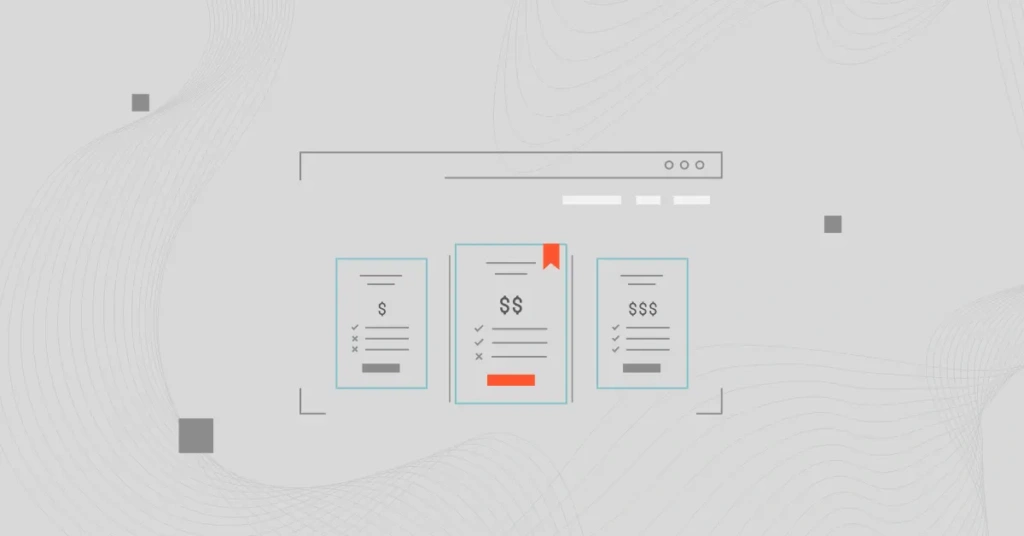Pricing matters. Charge too little and you won’t earn enough revenue to stay afloat. Charge too much and you could lose thousands in potential business. You don’t want to price out some customers.
So what can you do? This is where tiered pricing comes into play. The SaaS pricing approach can be helpful for companies looking to meet the needs and budgets of their different customer personas.
We previously published a guide on different SaaS pricing models and how to choose the best pricing for your business. This guide will take a deeper look at tiered pricing, including how it compares to volume pricing, its benefits, and strategies you can use to set profitable pricing in each tier.
What Is Tiered Pricing?
Also known as price tiering, tier-based pricing offers a variety of packages, each of which offers a particular set of benefits at different price points. Those benefits can be in the form of features, supported users, storage space, computing resources you can access simultaneously, and more.
When using tiered pricing, companies may have three to five or even more different pricing tiers. An example might be a pricing structure that includes a Basic, Advanced, and Enterprise level plan. The Basic, or “base”, plan will have limited features, customer support, and service performance levels.
The Advanced plan may include all or most of the features offered. Whereas the Enterprise plan may include features or benefits custom to large businesses with unique needs.
Salesforce uses a similar approach for their sales CRM software:
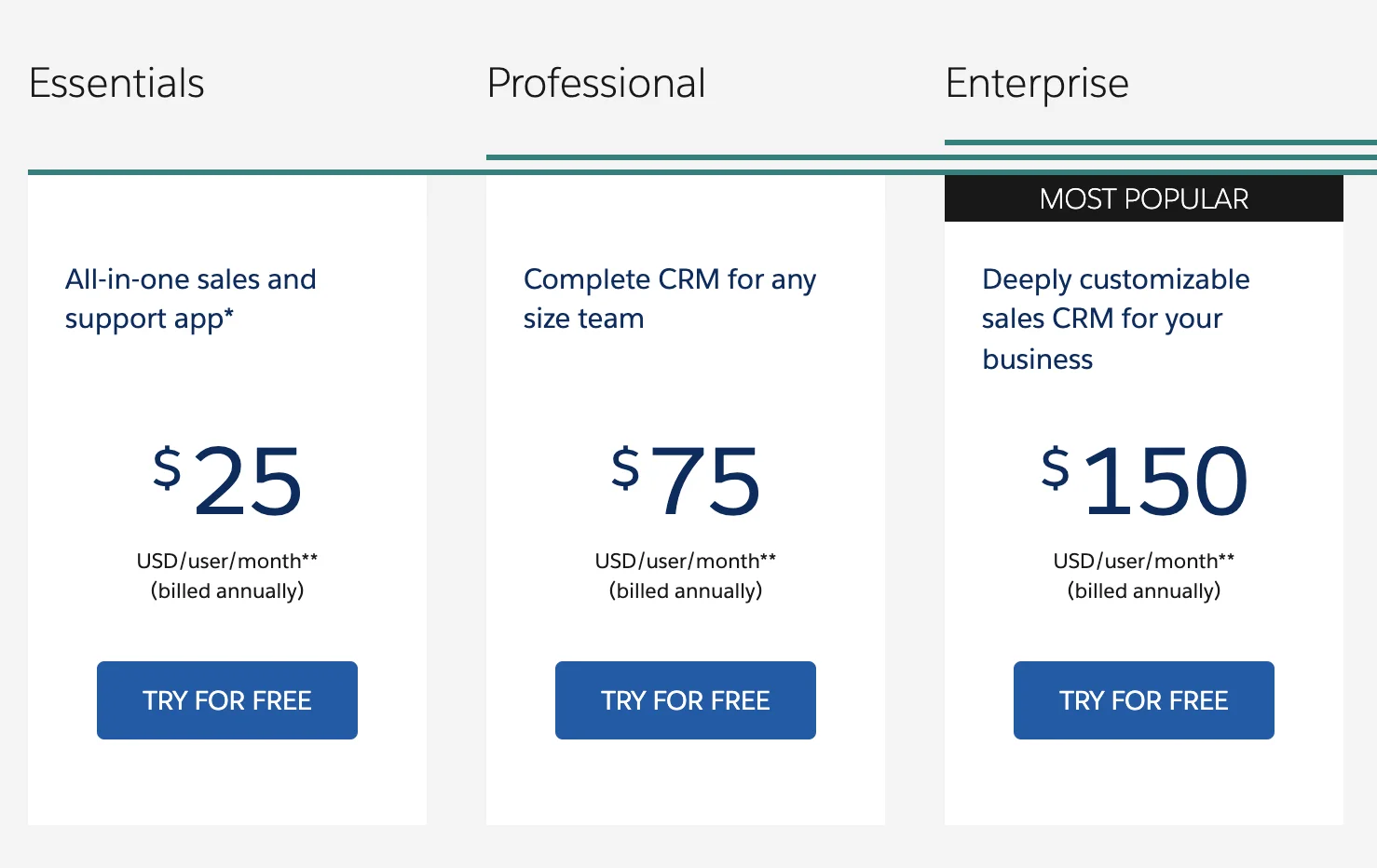
Here are a few more pricing-tier examples and naming structures:
- Free, Basic, Advanced, Enterprise
- Basic, Pro, Enterprise
- Free, Startup, Scaleup, Enterprise
- Starter, Pro, Teams
- Basic, Personal, Professional, Business
- Personal, Professional, Business
- Startup, Growth, Scale, Custom
Now, let’s look at some companies using tiered pricing successfully.
What Are the Four Tiered Pricing Strategies to Use Right Now?
Three-tier pricing
This approach offers three levels, such as Personal, Professional, and Business. For example, the Personal tier is usually the cheapest and targets customers who want basic features. The Professional tier is more expensive and offers more features or a higher level of service.
The Business tier is the most expensive and is designed for customers with the most complex needs.
Three-tier pricing works well when you want to appeal to three customer personas simultaneously. Also, the approach makes it easier for customers to compare the offerings in each and make quicker purchase decisions than if they were comparing multiple pricing tiers.
Multiple-tier pricing
This approach includes four or more tiers. Multiple-tier pricing is suitable for covering multiple customer needs or personas within a broad customer base.
This type of pricing strategy enables SaaS businesses to tailor their pricing to different customer segments. In this way, customers can choose from a broader range of pricing options for different capabilities but within the same product or service.
This approach can help to increase sales and attract customers at different price points or budget levels. By offering multiple tiers, customers have the opportunity to see what additional value they’ll get by upgrading, which can encourage them to upgrade.
This, in turn, can help to ensure customer retention and long-term revenue growth.
Usage-based tiers
Usage-based tiers charges customers based on their usage. It enables companies to charge customers more as they use more resources, thereby gaining more value.
This type of pricing is especially beneficial for companies that offer online services, since it enables them to easily scale their services to meet the needs of their customers. Usage-based tiers also make it easier to forecast revenue since the usage is directly tied to the customer’s expenses.
In addition, usage-based tiers help companies adjust their pricing to reflect the true cost of their services. Besides, customers can feel more in control of their spending since they have the flexibility to use as much or as little as they need.
Feature-based tiers
Feature-based price tiering works much like a multiple-tiered pricing system, except the tiers are differentiated based on features, not their number.
This enables customers to select the tier that best fits their technical needs and budget. They avoid paying for features they don’t need. And this can help to reduce overall costs, while still delivering the features the customers want.
It also provides a way for businesses to monetize their product by offering different levels of features and services. This can help to drive more revenue and empower customers to get the most value from their purchase.
User count tiers
This type of pricing is popular for software and services that have multiple users. For example, a company may offer plans with different user count tiers, such as 1-5 users, 6-10 users, and 11-20 users.
Similarly to usage-based price tiering, this approach enables businesses to charge a higher rate for more users. This allows customers to purchase the plan that best suits their needs, while also providing a predictable revenue stream for the business
Also, user count tiers provide an incentive for customers to add additional users to the service, as it’s typically more cost-effective than purchasing multiple individual plans. Customers can also choose to remove unnecessary users to lower their subscription costs.
Tiered Pricing Examples: Which SaaS Companies Use Tiered Pricing?
If you are unsure whether to make your pricing model tier-based or what to include in each tier, here are some real-world examples to help guide your decision.
1. Drift
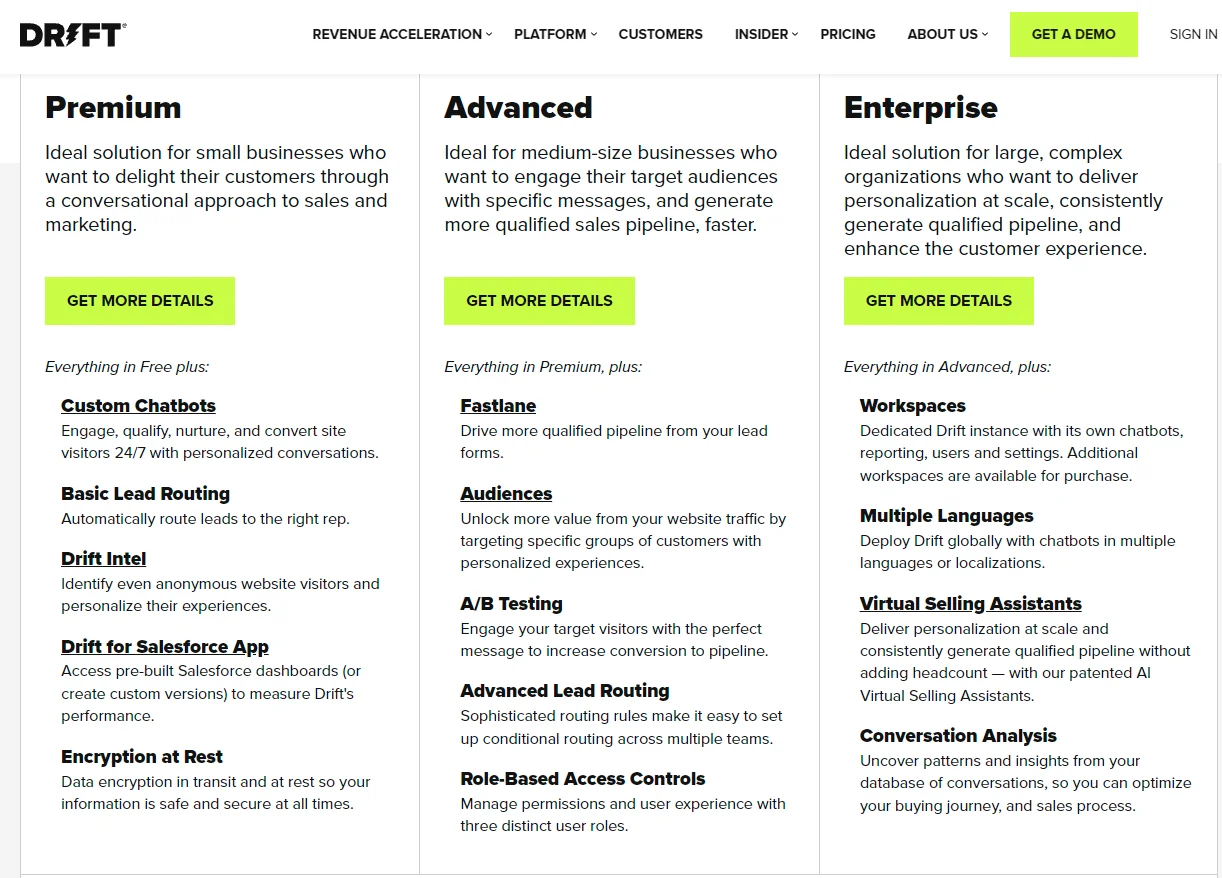
The revenue acceleration platform, Drift, relies heavily on a three-tiered pricing strategy. They clearly explain the ideal use cases for each plan. You’ll also notice that Drift uses only five items per tier to make it easier for potential clients to understand and compare what each plan offers. It then elaborates on each plan’s features and offers additional options below the pricing table.
2. FormStack
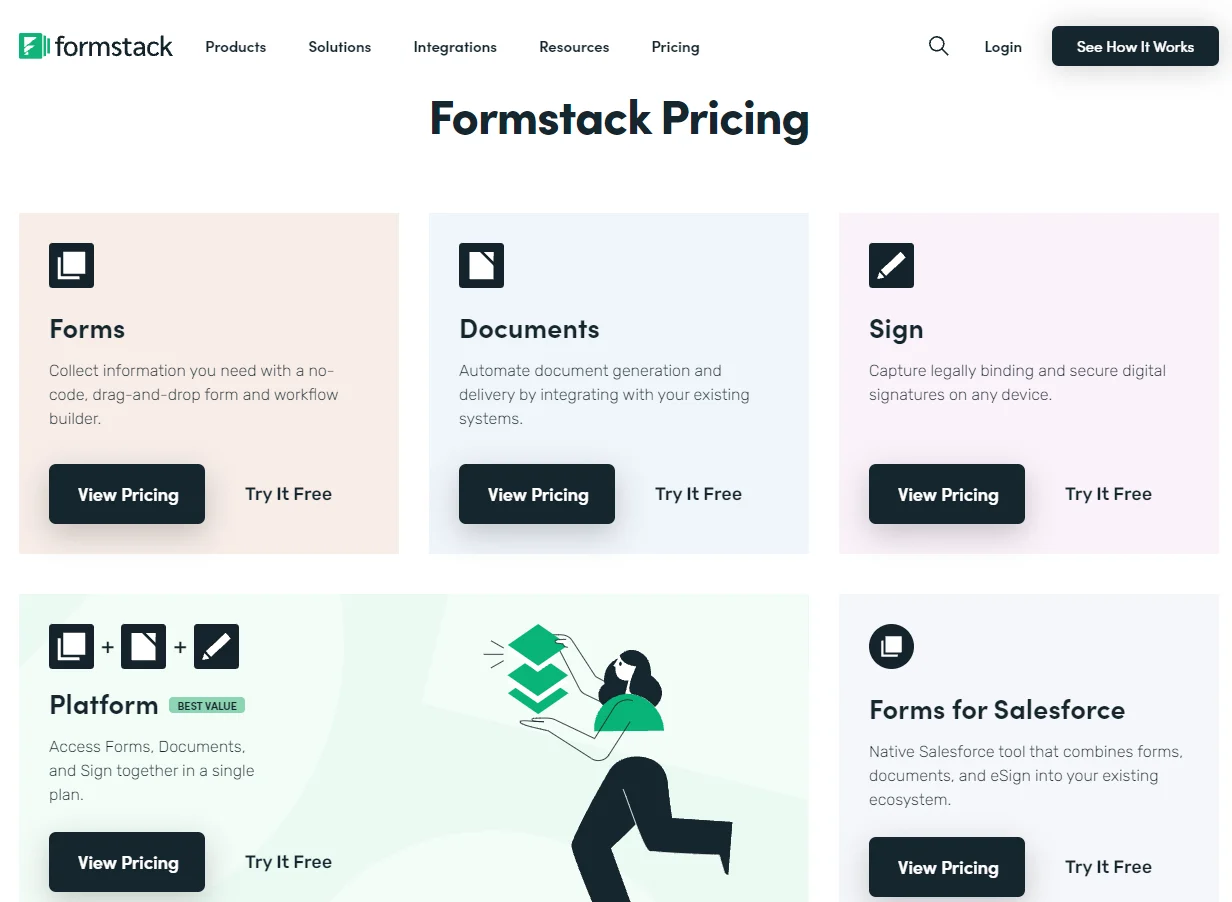
Formstack includes several unique options, including Forms, Sign, Documents, Forms for Salesforce, and Platform (a combination of Forms, Documents, and Sign). All five offerings come in four- or three-tiered pricing models. The following are examples of plans under the Platform tier.
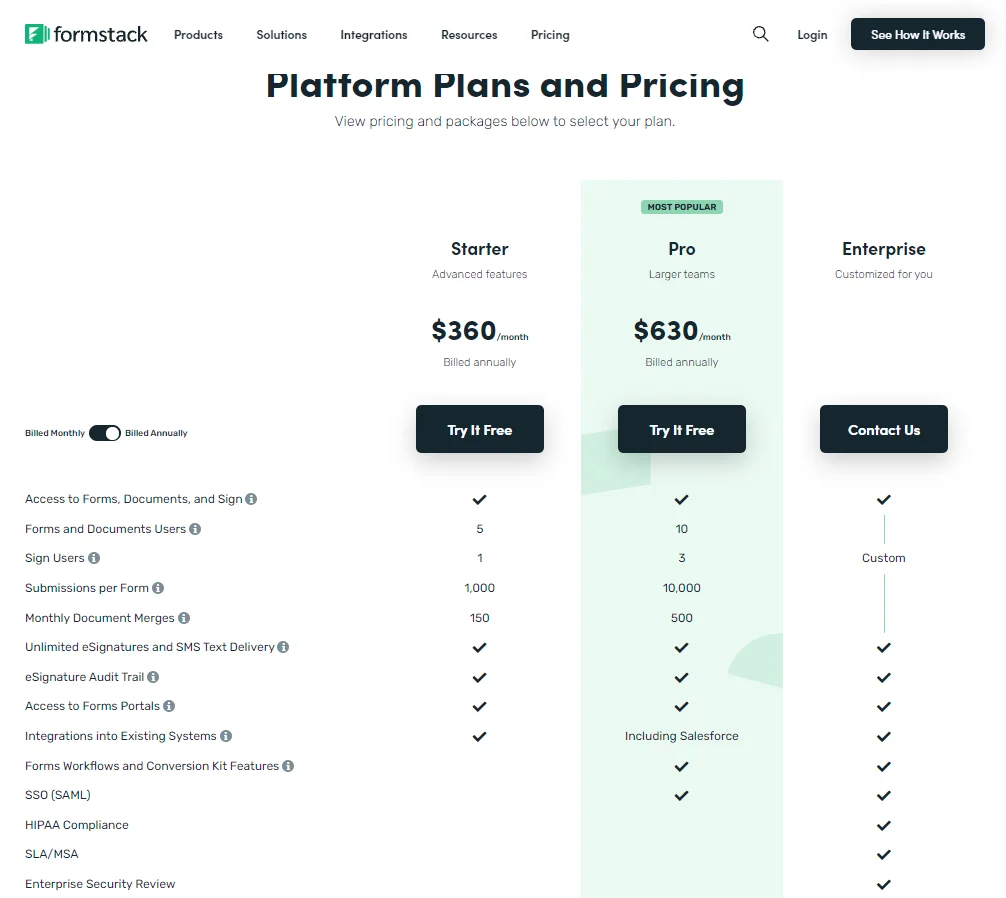
Because of this multi-level tiered pricing strategy, Formstack captures even more diverse customers than it otherwise would.
3. Obsidian
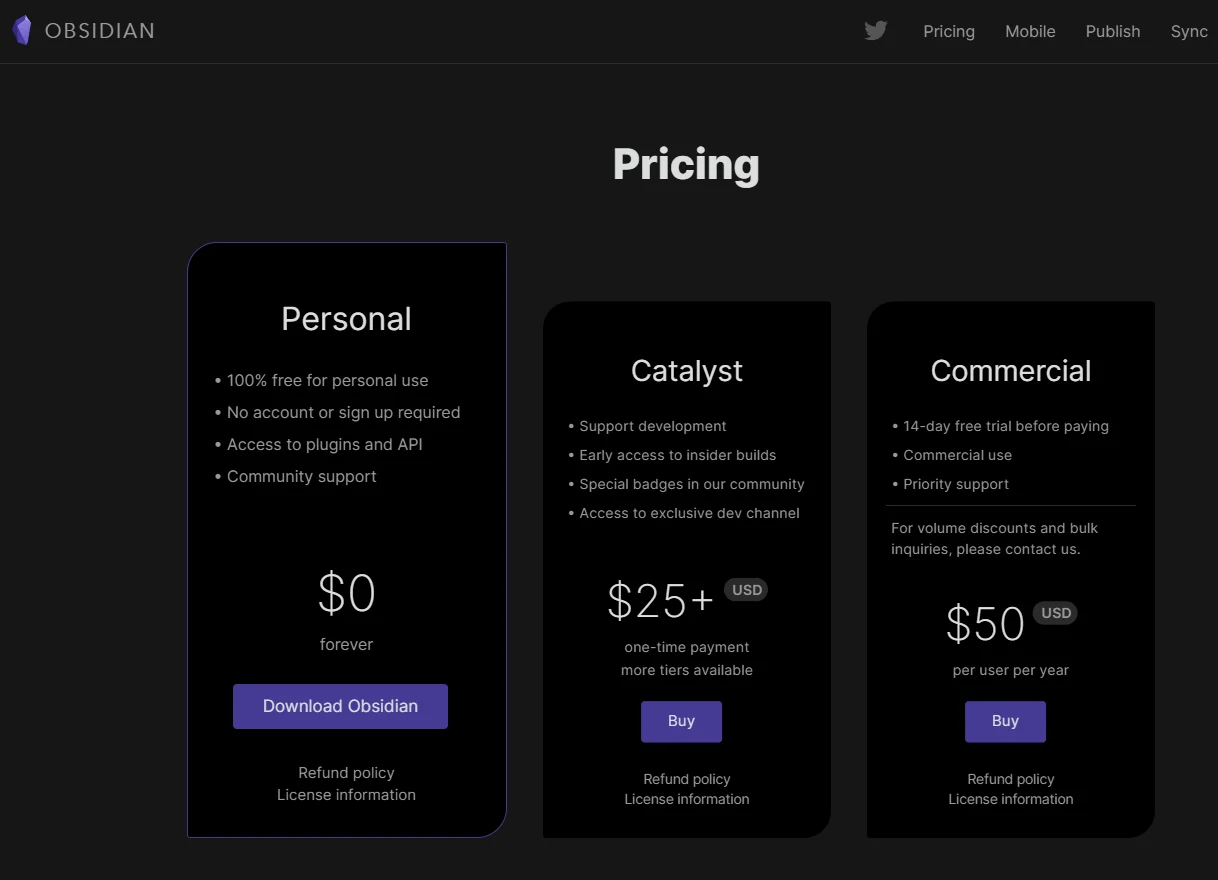
Obsidian is an excellent example of how to tier SaaS pricing according to user type and features. If a customer wants more features, Obsidian offers them for an additional fee per bundle.
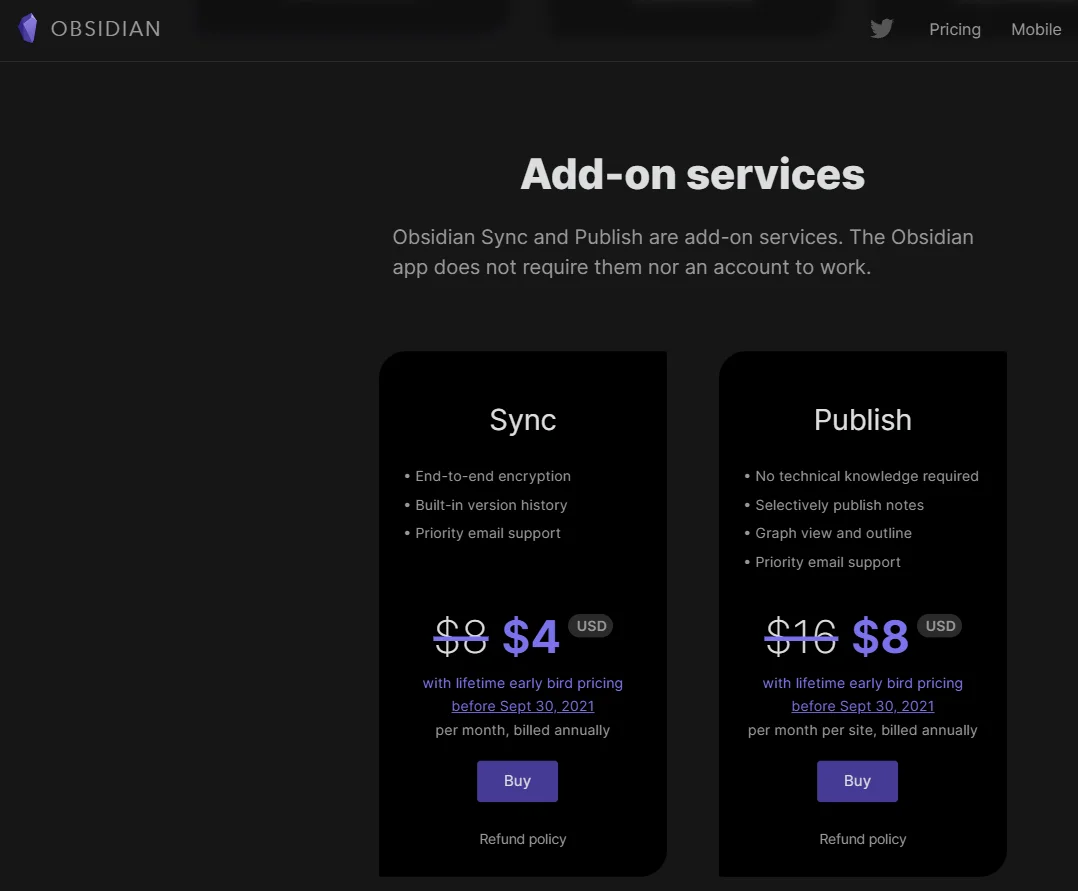
4. CrazyEgg

CrazyEgg offers five-tiered pricing for its website optimization solution. If your offering has many unique features, includes several personas, or involves special use cases, you will find inspiration in this pricing structure.
The plans also showcase a hybrid pricing approach (combining usage-based pricing and tier-based pricing) to appeal to a wide range of customers across various growth stages and budget levels.
5. Unbounce
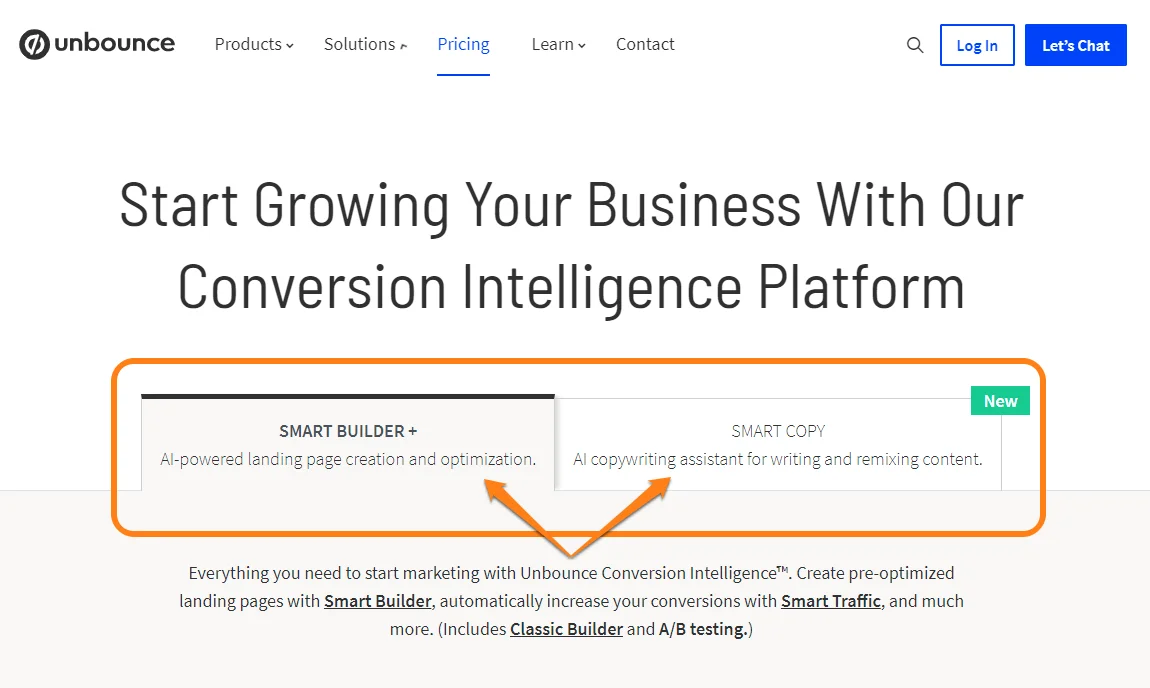
The conversion intelligence platform, Unbounce, offers two separate plans for different customer personas:
- With Smart Builder+, customers can create and optimize landing pages
- Smart Copy for those who need help writing copy
Each plan comes with three and two additional tiers, respectively, as well as a Concierge plan that provides Unbounce’s enterprise-grade functionality.
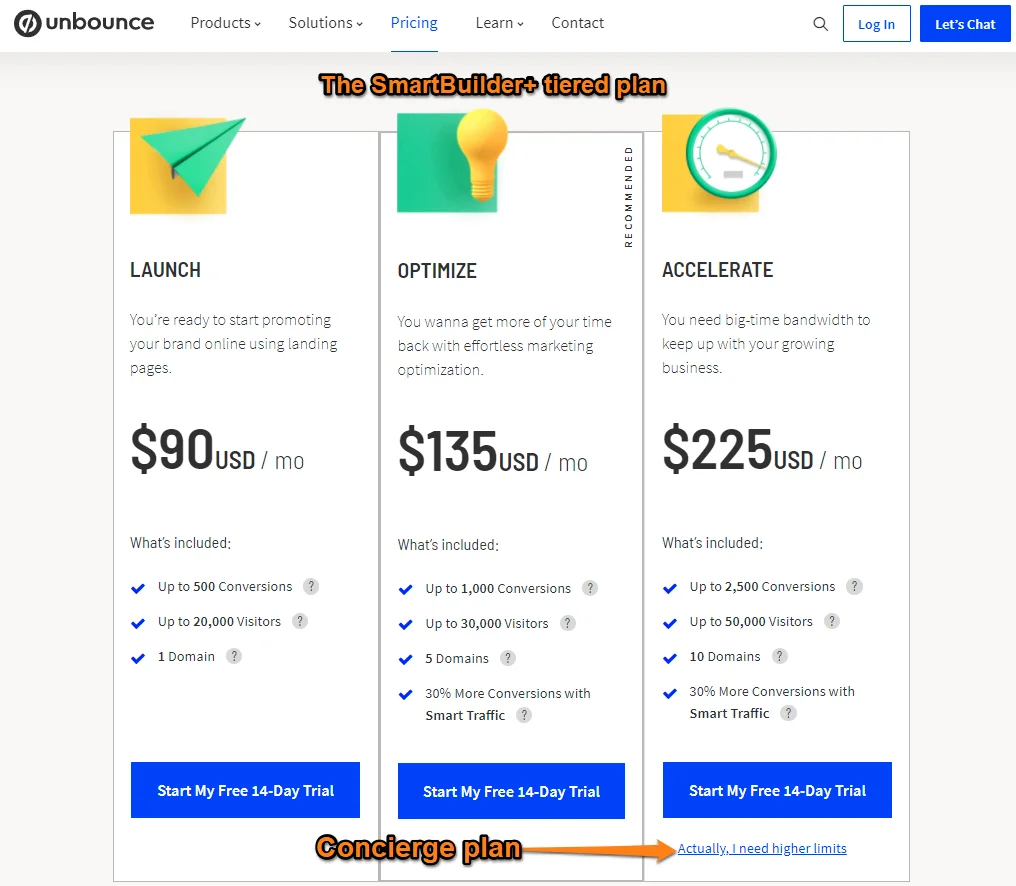
In the second tier, the plan offers similar services (creating and optimizing landing pages) but at a different usage level and budget.
6. Price Intelligently
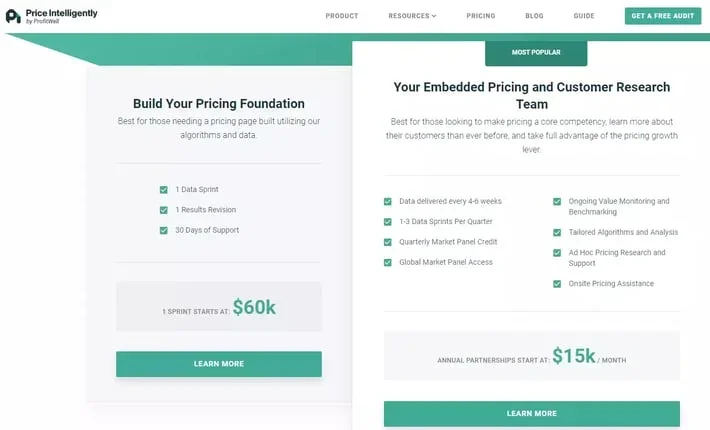
Price Intelligently capitalizes on a two-tier model to motivate potential customers to sign up for its monthly subscription service, which is great for their cash flow. That they offer more capabilities in it than their 1-sprint option is a sign that they are promoting the monthly subscription.
7. ResponseTap
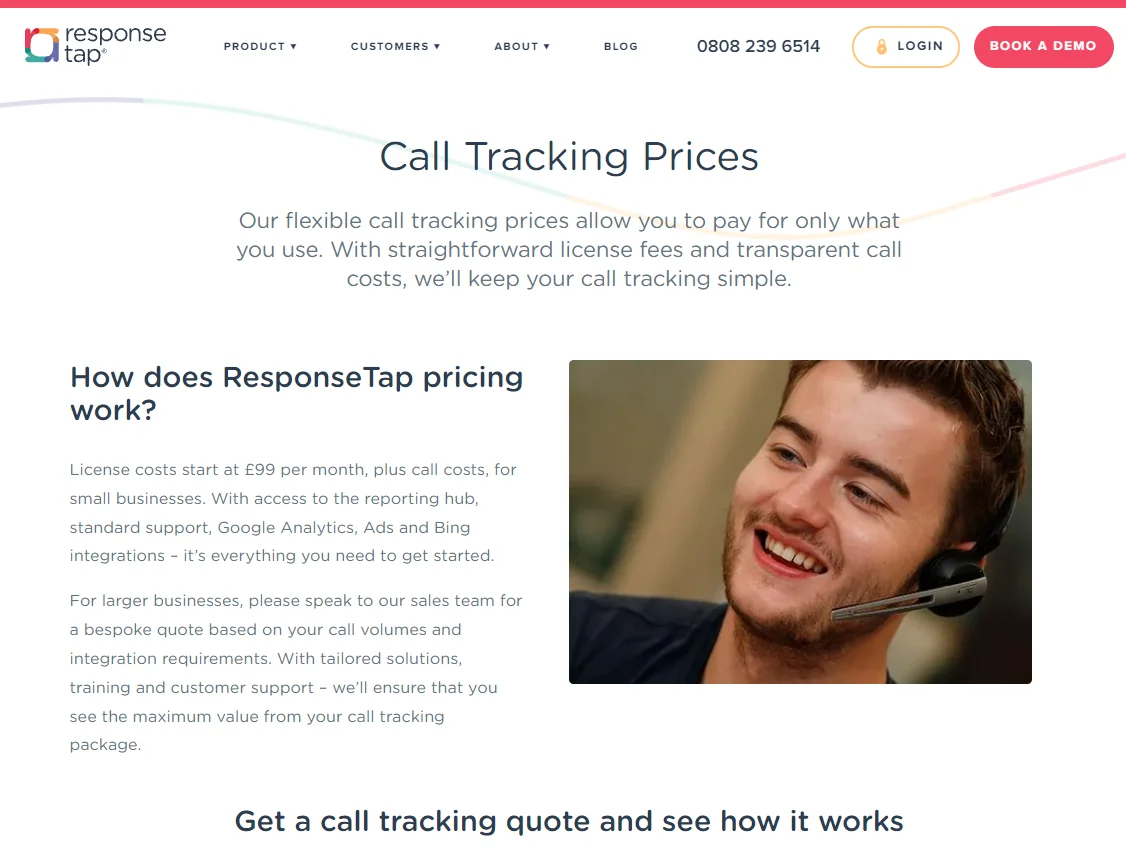
The intelligent call tracking platform, ResponseTap, uses a two-tiered pricing approach differently. Price Intelligently offers a flat-rate versus recurring approach, but ResponseTap offers a flexible feature-based pricing plan, so customers pay only for the features they use.
There is a $100 license fee for standard features, with additional add-ons available based on customer needs, and even more customized packages are available for large companies.
Considering the seven examples, it is clear how different SaaS companies achieve market-price fit while maximizing revenue. Still, why is the tiered pricing model a favorite among SaaS businesses?
Tiered Pricing Pros And Cons: What Are The Benefits Of Tiered Pricing To SaaS Companies?
Tiered pricing has several distinct advantages over other SaaS pricing strategies. The full list of benefits will differ from company to company.
Here are some tiered pricing benefits that apply across the board:
- Pricing in tiers offers potential buyers choice, where they feel like they can choose the package that is right for them instead of being forced into one. This can improve conversion rates.
- With a simple tiered pricing model, subscribers can forecast how much they will need to pay for your services.
- The simplicity can also enable you to predict revenue and cash flow over a specific period with some accuracy, and hence how to manage your resources while growing your SaaS business.
- It aligns pricing to value while tiers are differentiated to cater to different buyer personas. This way you can appeal to a wide range of markets, budgets, and use cases at the same time.
- It generates more revenue than other models, like volume-based pricing (explained further below)
- Tiered pricing provides a clear path to the next best tier should a customer outgrow their current package.
- If you want to attract prospects to your door, you can offer them a free trial before providing them with various options to upgrade once the trial period is over.
- Tier-based pricing works well with other SaaS pricing strategies. You can easily combine freemium, user-based, and feature-based pricing in tiers to encourage conversion.
- Since customers pay for commensurate value, the pricing model feels fair to all parties, which can encourage customer retention.
- Tier pricing gives your price an anchor by showing how much more you charge for the highest package compared to others.
Even so, a SaaS pricing strategy based on tiers is not perfect. Consider these possible disadvantages:
- A tiered pricing model that is overly complex can confuse customers. Confused clients may not understand the value you provide and may instead fall victim to competitor seduction based solely on price.
- For many SaaS brands, it’s challenging to create the right tiers for your customer segments. (We provide tips for building a robust pricing strategy further below)
Tiered Pricing Vs. Volume Pricing for SaaS: How Do They Compare?
Volume-based SaaS pricing is a good way to sell measurable quantities of a product or service. Examples include cloud storage, usage time, support calls, and minutes served. It can also include computing resources, such as CPU capacity, server uptime, and RAM quantities, from companies like AWS, Dropbox, and Drive.
Tiered pricing differs from volume pricing in that volume pricing applies discounts across the board once a customer reaches a specific purchase volume.
This is in contrast to tiered pricing, which provides a discount only for units that are sold above a certain threshold. Prices vary according to the tier. Tiered pricing enables SaaS businesses to earn more per sale than businesses that use volume-based pricing.
How do you calculate tiered vs. volume pricing?
As an example, we’ll use both models with cloud storage. Assume your pricing ranges look like this:
Price per gigabyte (GB) per week | Tiered pricing | Volume pricing |
$0.020 | 0-200 GB at | 0-200 GB |
$$0.018 | 201-300 GB | 201-300 GB |
$0.016 | 301-400 GB | 301-400 GB |
$0.014 | 401-500 GB | 401-500 GB |
$0.012 | 501-600 GB | 501-600 GB |
$0.10 | 601- 1,000 GB | 601- 1,000 GB |
How much revenue would you make from a small business customer who buys 450 GB of storage per week from you?
- Pricing on a tiered scale:
You will charge their first 200 GB at $0.020 ($0.020 x 200) = $4
The next 200-300 GB will be ($0.018 X 100) = $1.8
Followed by the next 300-400 ($0.016 X 100) = $1.6
The remaining 50 GB will take the cost of the 400-500 GB tier ($0.014 X 50) = $0.7
The total weekly revenue would be (4+1.8+1.6+0.70) = $8.10
- Pricing based on volume:
The customer’s purchase is in the 400-500 GB range, so you’ll use $0.014 for all storage units ($0.014 X 450) = $6.3
The volume-based approach yields less revenues for the same storage volume. Your customer persona may be thrilled to save $1.8 dollars, so you could attract more customers than your competitor, who uses tiered pricing.
Companies like AWS use a combination of tiered and volume-based options for its Amazon S3 pricing. It is a complicated model that may be difficult to calculate for you and your customer, but it can be beneficial if you can.
How To Create Profitable Pricing Tiers For SaaS Companies
Now you might wonder which features to include in each tier, how to tell if the price is too high, or if it is too low. Professionals in your field can advise you on how to set your SaaS pricing. Yet you can do even more by yourself.
Here are a few strategies we recommend you use for success:
1. Adapt your pricing tiers to the needs of your customer personas
This information is likely available in the product-market fit study you used to test your SaaS idea. A few aspects to consider include the buyer persona’s budget, time of use, and features for the price.
2. Assign each tier a specific role
An example will help. Many SaaS companies use a freemium or free trial-based model to draw people in.
The next tier, whether Advanced, Pro, ScaleUp, Growth, or something else, is usually the most comprehensive and includes the features that your customers need the most, which is why it is typically the most popular and generates the most revenue for the company.
Pricing your product at the most expensive level is an important way to set a premium reference point, boost your credibility, and allow buyers to consider the more affordable premium plan.
3. Design each tier with a set of features your target customer(s) needs at the growth stage you want to target
The next tier will become progressively more desirable as their needs increase and their growth accelerates.
4. Justify the price increase by illustrating how your service’s value increases from tier to tier
There are simple ways to improve the more expensive tiers, including adding more features, technical support, and other quantifiable units.
5. You can also price according to value
Show how your services can help a customer achieve his or her goals for a fraction of the cost of hiring a full-time engineer, for example. Alternatively, you can show how you can save them time by automating tasks that would otherwise have cost far more to complete manually.
It’s easy to see how the following image uses both checkmarks and clear added features to illustrate the value of higher plans over the cheaper options.

6. Benchmark against competitors
Although you don’t want to replicate a competitor’s pricing model, starting somewhere and then iterating as you collect more data and customer feedback might be a less overwhelming way to start.
7. Use behavioral economics
Introduce a middle tier that makes the highest tier seem like a better value. This can guide customers toward choosing a higher-priced option.
8. Monitor feedback
Gather and analyze customer feedback on your pricing structure regularly. Based on this feedback, adjust tiers and pricing to better meet customer expectations.
You should also stay responsive to market changes and customer needs by periodically reviewing and adjusting your pricing tiers.
9. Ensure a smooth transition for existing customers
If you are transitioning from a flat-rate pricing model to tiered pricing, clearly communicate the changes to your existing customers. You should be able to highlight how the new model benefits them. It is also recommended that you offer incentives such as discounts or more features to existing customers who switch to a new tier.
10. Measure your COGS and unit economics to optimize your pricing model as you grow
Many SaaS companies, including startups to more advanced stage brands, do not track their unit economics and costs of goods sold (COGS) properly. Instead, they focus on maximizing revenue rather than gross margins.
The fact remains that gross margins do not increase as you scale. Unless, of course, you manage your cost KPIs now and use them to inform your SaaS pricing.
If, for example, you are unaware of your costs per customer, you will struggle to determine if you should review the pricing for a single tier or for all tiers.
You will also struggle to determine if you should offer a feature in a lower or higher tier if you don’t know how much you spend to build, run, and support it. It will be very difficult to decide whether to offer an expensive feature as an add-on or as part of a tier.
In the same way, if you don’t know how long and how much a team project will cost, you will have difficulty deciding what to charge for your service, including technical support. It is even more challenging if you are using advanced systems like containers, Snowflake, and Kubernetes.
CloudZero Can Help You Build Profitable Pricing Tiers
CloudZero gathers data from multiple sources, including Snowflake, Kubernetes, and multiple AWS, Azure, Oracle Cloud, and GCP services.
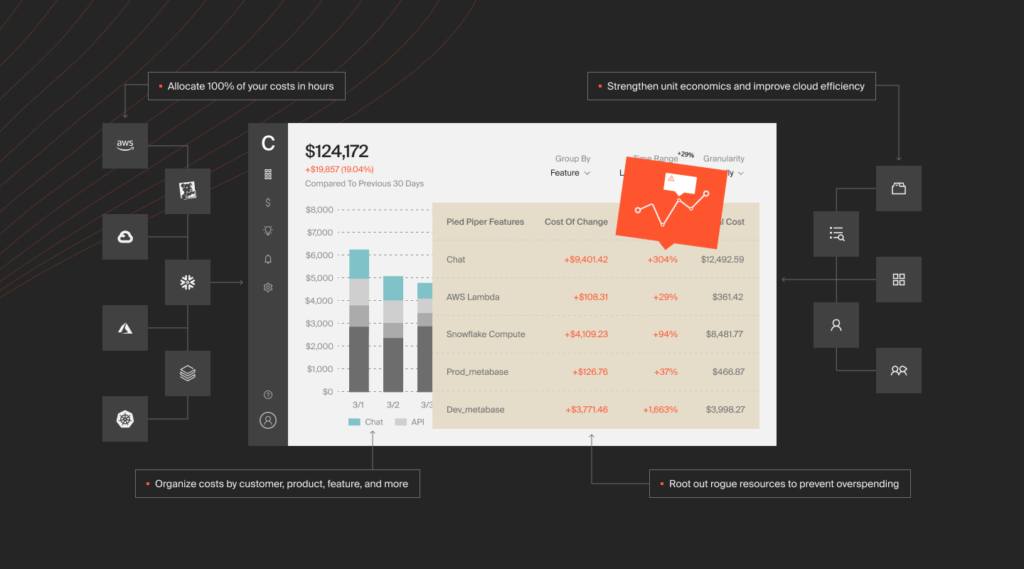
The Cloud Cost Intelligence platform then analyzes your costs data and shows you how your cloud spend aligns to specific business outcomes, such as cost per feature, per customer, per project, per team, per environment, per service, and more.
When you know how much you spend to support your product, feature, or service, you can more accurately decide what margin to set to achieve profitable pricing — instead of relying on gut feeling.  to see how you can better price your SaaS products to improve customer retention, profitability, and competitiveness.
to see how you can better price your SaaS products to improve customer retention, profitability, and competitiveness.

